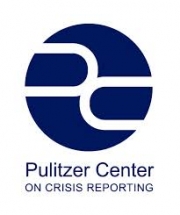Posted on February 24, 2014
Source: Pulitzer Center on Crisis Reporting

Against the odds, Patapsco Arena tries to be glamorous tonight. The building stands isolated on a sparse block in an infamously jilted south Baltimore neighborhood, its soggy and windowless off-white frame surrounded by crumbling tractor-trailer parking lots, empty body shops and forlorn strip malls. But tonight, from a side door just around the building from the usual bingo games, there emanates an exceptional, glitter-filled commotion: the fourth annual “Know Your Status” Free Ball.
Tonight’s festivities are promoted by the Baltimore City Health Department but largely planned by leaders in the city’s ballroom scene, a community primarily composed of black lesbian, gay, bisexual, transgender and queer (LGBTQ) individuals who attend competitive performance events — or drag balls — in tiaras, sportswear, homemade gowns and street clothes, ready to cheer, talk trash and walk in costume categories against competitors on a runway. The spoils of status, money and trophies have been feeding national rivalries and contests in this community for more than four decades.
The focus this evening is young black men who have sex with men (MSM), a large portion of the ball scene’s participants. It continues with the hopes that the Health Department can earn the community’s trust and that the free testing and non-profit vendors will turn an established scene into a viable habitat for HIV prevention and intervention.
It’s been 34 years since the first report of HIV in our country — 27 since Ronald Reagan publicly said the word “AIDS” for the first time — but the HIV epidemic is raging in Baltimore for some as if no one has noticed. This year, when the Centers for Disease Control and Prevention (CDC) released national data about HIV infection, Baltimore had the third highest estimated AIDS diagnosis rate of any major metropolitan area in the country. Thirty-eight percent of Baltimore’s MSM are infected, with unrecognized status rates estimated around 60 percent — both figures about twice national averages.
Young, black MSM continue to carry the biggest burden of HIV. “They are the last ignored population,” Jordan White, who works as a community liaison for John’s Hopkins School of Medicine, says. As of 2010, after billions of dollars and decades of work, young African Americans made up 55 percent of the new infections in MSM and accounted for more new infections than any other subgroup by race, ethnicity, age and sex.